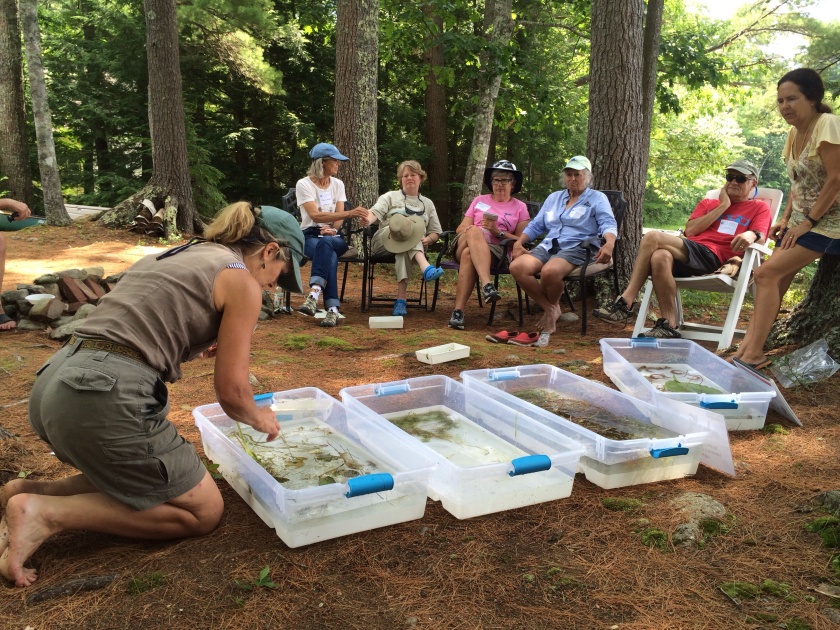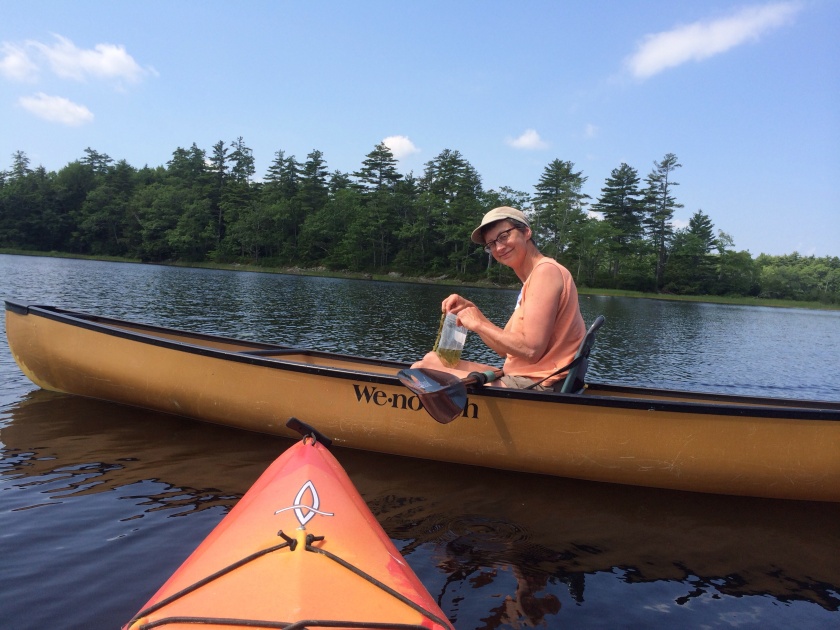We’ve had an unprecedented stretch of blue-and-gold weather, perfect for getting outdoors, although the gardens are begging for rain. Or twice daily watering. Just so you know that I am not just running from lake to lake, counting them up (see my recent post A baptism), I did return to Webber Pond several more times, one time swimming with both a loon and bald eagle for company. The water is quickly warming up.

It’s almost cheating to count the next two lakes, my go-to favorites. On Friday, I strapped the canoe securely atop my RAV4, ready for new waters. It was late afternoon Saturday, with the brutal heat easing, before I got up the energy to pack a picnic supper and head for McCurdy Pond. This beauty is a little over half a mile from my home. I took my time, poking into the little coves, on the way to my usual swimming spot.

The lighting suited my mood, as I reunited with the curving shoreline that I know so well. A cluster of sheep laurel, with a backdrop of birch, drew me like a magnet. This member of the heath family is one of the showiest flowers found in our wetlands. The peaceful glow of soul and evening stayed with me through a leisurely swim and supper, for once just sitting and being.

Of course, I do not always go solo. In fact, for the past week, I have been surrounded with loving concern and care from the best of friends and family. I was supposed to have been on a much-anticipated visit to Pennsylvania and Virginia, until the shingles in my right eye flared up at a most inopportune moment. So, instead, I have been comforted here at home, most notably with a series of delicious meals.
I suppose I am now truly guilty of hopping from place to place. Yesterday after church found me with friends Bill, Mary, and Mary, paddling Biscay and Pemaquid ponds, which are connected by a tiny stretch of the Pemaquid River. In these COVID times, all of these waters seem busier than I ever remember them in June, and there were many fellow boaters to greet along the way.


After saying our good-byes, I swam from a tiny island in Biscay, which makes Lake #3 in my 2020 swimming quest. With the warmer water and some conditioning, I’m up to twenty minutes now. This lake is my oldest favorite, as evidenced by the photos below. Taken around a quarter of a century ago, they bring back a time of wonder, of discovering Maine through the eyes of my children, long before we lived here.




